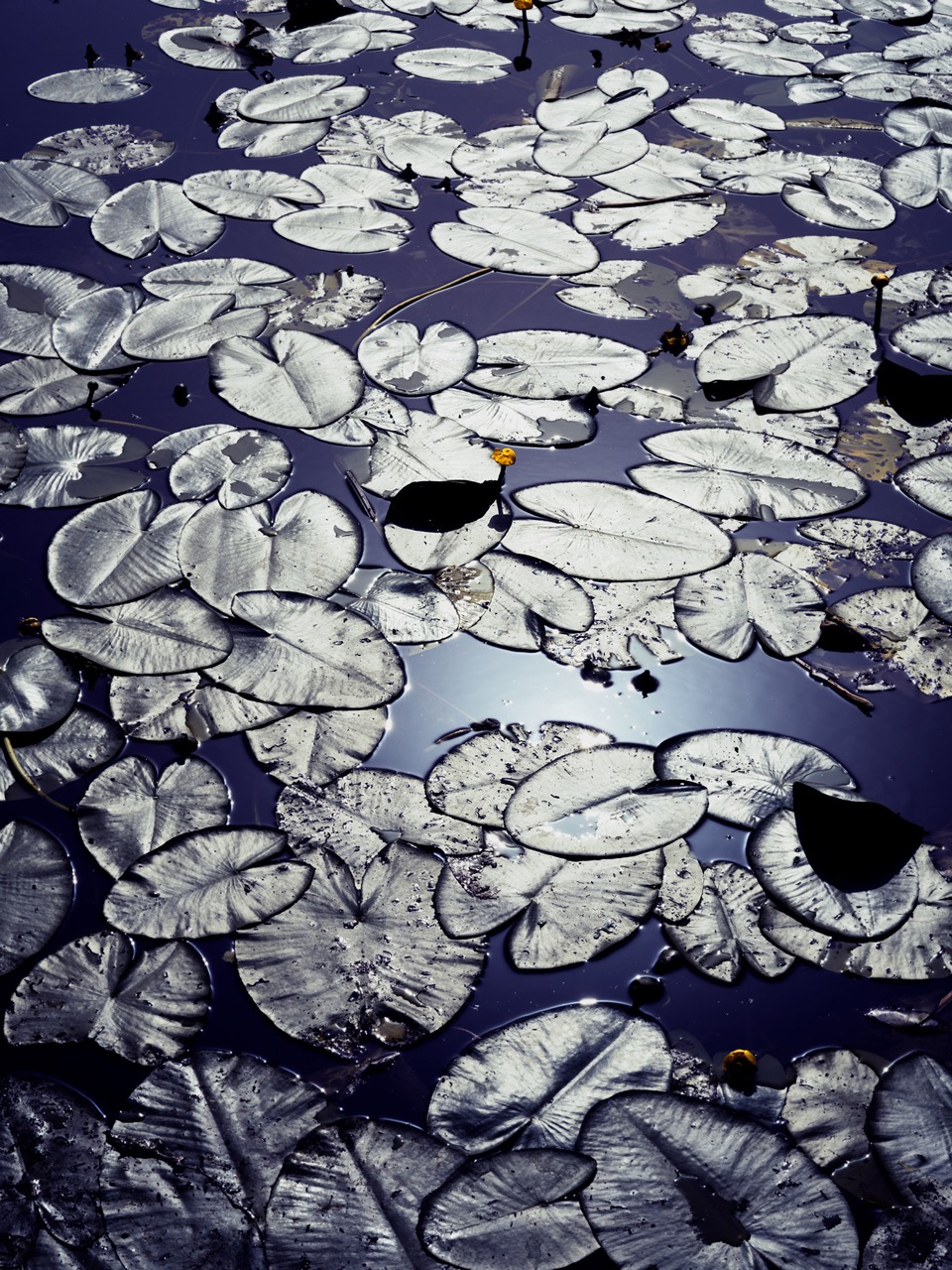
Triptychs of Thought and Spirit
Alejandra Nowiczewski
For Alejandra Nowiczewski, photography is not only a visual art form but also a philosophical and meditative practice.
Artdoc

For Alejandra Nowiczewski, photography is not only a visual art form but also a philosophical and meditative practice. Her work brings together spiritual reflection, metaphorical language, and aesthetic discipline to examine the deepest questions of being. Through poetic imagery and conceptual depth, Nowiczewski encourages viewers to pause, reflect, and connect with the emotional and symbolic layers beneath the surface of her images.
Payment Failed
The series Four Colours and One Movement features images in either intense red or deep blue, depicting natural scenes like trees and birds. Nowiczewski's layered work is inspired by Buddhist tradition, cognitive theory, and personal experience. She uses a combination of colour symbolism and metaphor, which makes her images minimalistic yet emotionally resonant.
At the heart of her artistic vision lies her desire to translate complex social and spiritual questions into visual form, awakening intuition and raising awareness through beauty and symbolic depth. "Photography, for me, is a way of bringing the cognitive into the visual universe," she shares. Her approach merges aesthetics with purpose: to address global issues such as climate change, biodiversity loss, and the need for mindfulness in an age of urgency.
While composed with painterly elegance, her images call for reflection. With a background in translation, Nowiczewski also brings linguistic awareness to her art, transforming verbal metaphors into visual ones and expanding how knowledge and meaning are felt and understood.

Creative Process and Japanese Art
The interplay between personal storytelling and conceptual research is central to her creative process. Sometimes, a personal experience that evokes reflection leads her to develop a photographic project. "An idea that turns into a project stems from my personal experiences, creating a need to convey it through images. I then research topics related to that experience and create a sketch of the images I intend to produce," Nowiczewski tells.
Her images blur the boundary between painting and photography and are inspired by Japanese art. "Drawing inspiration from Buddhist art of Japan from the 6th to 16th centuries, my images blur the boundaries between photography and painting, and I try to capture the colours used by the art of that period. I achieved this by digitally using overlaid coloured and textured papers." With her painterly approach, her visual language transforms colour into spiritual insight—bridging emotion, tradition, and symbolic meaning. "I try to resort to several elements, such as instant, atmosphere, and landscape, to convey a narrative consistent with the message the project intends."

The Power of Colour and Symbol
Zen Buddhism and its meditative practices have shaped her work, becoming a pathway through which she approaches photography as a form of spiritual insight and transformation. "Four Colours and One Movement is a project that relates, through images, four colours to the transformative movement whereby each of them changes negative qualities into positive ones in the Buddhist tradition," Nowiczewski shares. "Colour symbolism is frequently used to present abstract concepts through visual images, to make those concepts more universal."
Her colours are vivid and deliberate. Blue transforms anger into the wisdom of patience, yellow transmutes pride into balance, red turns attachment into discernment, and white elevates ignorance into the wisdom of ultimate reality. "Anger is represented by thunder and Vajrapāni, one of the main Bodhisattvas, whose colour is blue." These images are not just visual, she explains, "they portray a meditative path through inner states, rendered visible through the codes of colour, light, and shape."

Symbolic Triptychs and Composition
Each triptych represents a symbolic transformation drawn from Buddhist philosophy. "The representation of patience, embodied in the plum blossom, symbolises not only patience but also vitality and is an auspicious sign since its flowers bloom in winter before the others. Pride appears as the rising sun, giving way to ikebana and birds representing balance and harmony. Attachment is shown as a bird entangled in vines, ascending toward the moon—a symbol of wisdom and discernment. Ignorance is cast in darkness, eventually overcome by the lotus flower's ascent and the spiritual illumination offered by the Bodhi tree."
Her use of symbolic objects, historical textures, and careful composition results in images that are both serene and dense with meaning. "The need to explore beneath the surface of things to awaken spiritual awareness is conveyed using simplification, minimalism and abstraction, with images that are void- or mass-centred," she says. "I used vertical framing, following works of the art period of the Ancient Japanese art period, which were mostly narrow, vertical hanging scrolls. The narrative is organised in triptychs, with images grouped for a symbolic purpose, given their polysemic nature." Whether exploring ecological themes or spiritual symbolism, Nowiczewski's photography invites viewers to reflect, meditate, and reconsider what we see when we look. Hers is a practice of inquiry and insight, of transformation through light, colour, and composition.

Viewer Engagement and Emotional Response
Nowiczewski hopes her viewers find more than just beauty in her work. She aspires to provoke emotional understanding and intuitive reflection. "With my work, I hope to awaken spiritual awareness and intuition vis-à-vis the symbolic. The symbol suggests, provokes, and compels completion. Intuition in the face of the symbolic gives rise to interpretation, with the purpose of deciphering mythical imagery."
She wants to give the viewer an aesthetic and insightful experience. "In this sense, it is important to point out that Western art often imitates Zen means to create an enlightenment that may correspond to the state of Satori (Awakening)."
She references the Zen Buddhist notion of satori—a moment of sudden enlightenment—believing that art, like meditation, can guide viewers to experience insight into the impermanence and interconnectedness of all things.
She wants viewers to create a deep, vital relationship with her work when observing the images. "It's not about formal interpretation," she explains, "but a deeper, vital relationship with the image—an act of emotional comprehension." In Four Colours and One Movement, she encourages a state of spiritual awareness through symbolic imagery that provokes intuition.

Language, Metaphor, and Intuition
Her personal experiences represent a vast spectrum that nourishes the tone of her images. The impulse to interpret—rooted in her relationship with her father, a multilingual Polish immigrant who rarely spoke of his past—has guided her toward layered, interpretive thinking. "To start with, my training as a translator stems from a need to understand or interpret, which came from having a Polish-born father who spoke eight languages and was full of mystery. He was a man who did not want to talk about his past. I think this is why metaphor, both linguistic and visual, with its multiple layers of meaning and particular atmosphere, is a recurring element in my projects."
Nowiczewski's next project will focus on exploring her father's life through the archival photographs he brought from Poland after World War II. The Nazis killed his father, a Polish army officer, which made her father's early life shaped by displacement, silence, and survival. "He never spoke much about that war-ravaged period, but through his photographs and mine, I hope to close the circle."

About
Alejandra Nowiczewski was born in Buenos Aires, Argentina, and currently resides in Madrid, Spain. She has recently obtained a master’s degree in Photographic Projects from PhotoESPAÑA. Her work focuses on an equal commitment to neatness in the formal and visual metaphor in the symbolic. Her artistic discourse simultaneously explores themes of social, philosophical or ecological significance. In the context of contemporary photography, she intends to delve into the ability of photography to suggest something other than itself, to serve as a channel for visual metaphor and personal expression. She has exhibited her work in Buenos Aires and Madrid.
.svg)
.svg)
.svg)










